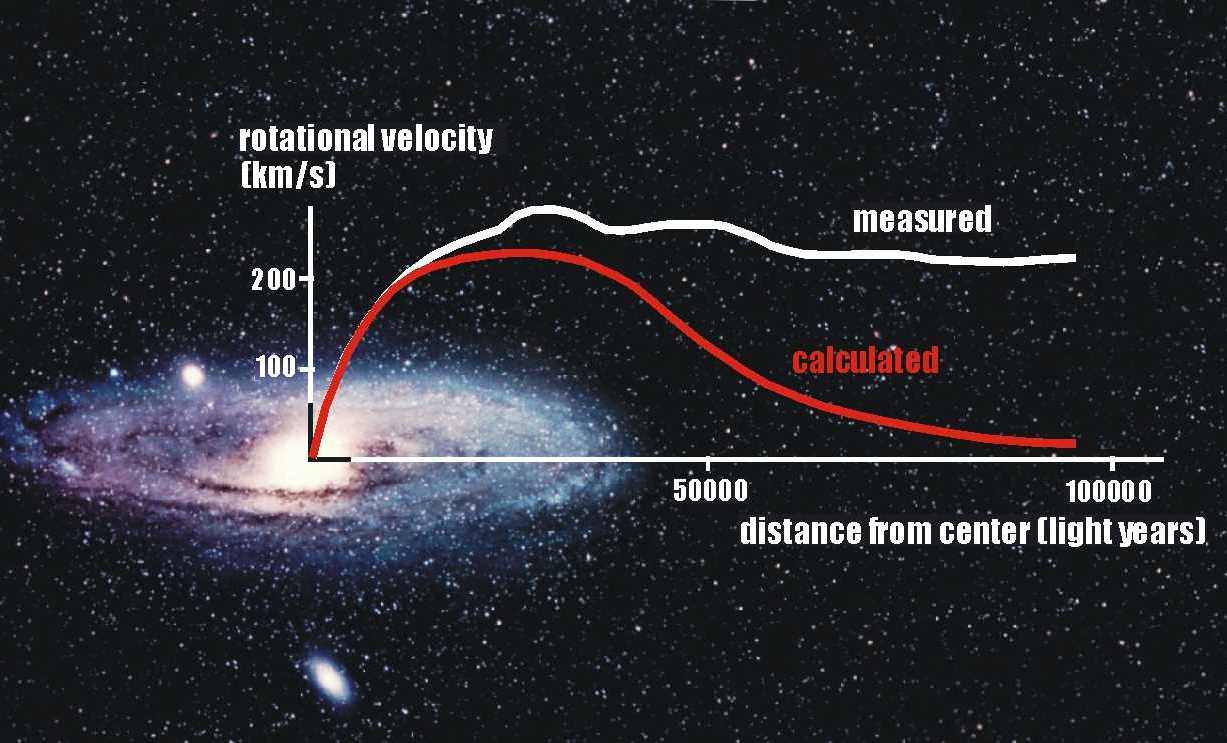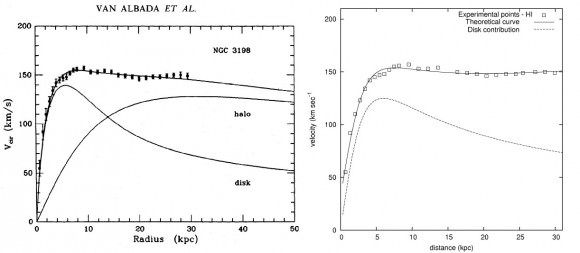In his classic book On the Structure of Scientific Revolutions, the philosopher Thomas Kuhn posited that, for a new scientific framework to take root, there has to be evidence that doesn’t sit well within the existing framework. For over a century now, Einstein’s theory of relativity and gravity has been the existing framework. However, cracks are starting to show, and a new paper from researchers at Case Western Reserve University added another one recently when they failed to find decreasing rotational energy in galaxies even millions of light years away from the galaxy’s center.
Continue reading “Rotation Curves of Galaxies Stay Flat Indefinitely”The Milky Way's Mass is Much Lower Than We Thought

How massive is the Milky Way? It’s an easy question to ask, but a difficult one to answer. Imagine a single cell in your body trying to determine your total mass, and you get an idea of how difficult it can be. Despite the challenges, a new study has calculated an accurate mass of our galaxy, and it’s smaller than we thought.
Continue reading “The Milky Way's Mass is Much Lower Than We Thought”Astronomy Without A Telescope – Could Dark Matter Not Matter?

[/caption]
You probably want to put on your skeptical goggles and set them to maximum for this one. An Italian mathematician has come up with some complex formulae that can, with remarkable similarity, mimic the rotation curves of spiral galaxies without the need for dark matter.
Currently, these galactic rotation curves represent key evidence for the existence of dark matter – since the outer stars of spinning galaxies often move around a galactic disk so fast that they should fly off into intergalactic space – unless there is an additional ‘invisible’ mass present in the galaxy to gravitationally hold them in their orbits.
The issue can be appreciated by considering the Keplerian motion of the planets in our Solar System. Mercury orbits the Sun at an orbital velocity of 48 kilometers a second – while Neptune orbits the Sun at an orbital velocity of 5 kilometers a second. In the Solar System, a planet’s proximity to the substantial mass of the Sun is a function of its orbital velocity. So, hypothetically, if the Sun’s mass was reduced somehow, Neptune’s existing orbital velocity would move it outwards from its current orbit – potentially flinging it off into interstellar space if the change was significant enough.
The physics of the Milky Way Galaxy is different from the Solar System, since its mass is distributed more evenly across the galactic disk, rather than 99% of its mass being concentrated centrally – the way it is in the Solar System.
Nonetheless, as this past Universe Today article explains, if we assume a similar relationship between the cumulative mass of the Milky Way and the orbital velocity of its outer stars, we must acknowledge that the visible objects within the Milky Way only have 10-20% of the mass that is required to contain the orbital velocity of stars in its outer disk. So we conclude that the rest of that galactic mass must be dark (invisible) matter.
This is the contemporary consensus view of how galaxies work – and a key component of the current standard model of the cosmology of the universe. But Carati has come along with a seemingly implausible idea that the rotational curves of spiral galaxies could be explained by the gravitational influence of faraway matter, without needing to appeal to dark matter at all.

Conceptually the idea makes little sense. Positioning gravitationally significant mass outside of the orbit of stars might draw them out into wider orbits, but it’s difficult to see why this would add to their orbital velocity. Drawing an object into a wider orbit should result in it taking longer to orbit the galaxy since it will have more circumference to cover. What we generally see in spiral galaxies is that the outer stars orbit the galaxy within much the same time period as more inward stars.
But although the proposed mechanism seems a little implausible, what is remarkable about Carati’s claim is that the math apparently deliver galactic rotation curves that closely fit the observed values of at least four known galaxies. Indeed, the math delivers an extraordinarily close fit.
With skeptical goggles firmly in place, the following conclusions might be drawn from this finding:
• There are so many galaxies out there that it’s not hard to find four galaxies that fit the math;
• The math has been retro-fitted to match already observed data;
• The math just doesn’t work; or
• While the author’s interpretation of the data may be up for discussion, the math really does work.
The math draws on principles established in the Einstein field equations, which is problematic as the field equations are based on the cosmological principle, which assumes that the effect of faraway matter is negligible – or at least that it evens out at a large scale.
Perplexingly, Carati’s paper also notes two further examples where the math can also fit galaxies with declining rotational velocities in their outer stars. This is achieved by switching the sign of one of the formulae components (which can be + or -). Thus, on the one hand the effect of faraway matter is to induce a positive pressure that contains the rapid rotation of stars, preventing them from flying off – and on the other hand, it can induce a negative pressure to encourage an atypical decay in a galaxy’s rotation curve.
As the saying goes, if something seems too good to be true – it probably isn’t true. All comments welcome.
Further reading:
Carati Gravitational effects of the faraway matter on the rotation curves of spiral galaxies.

